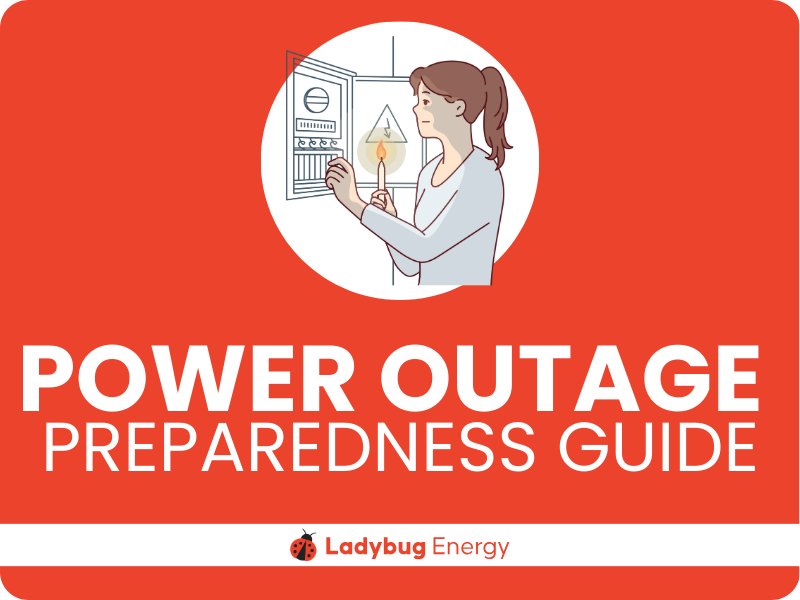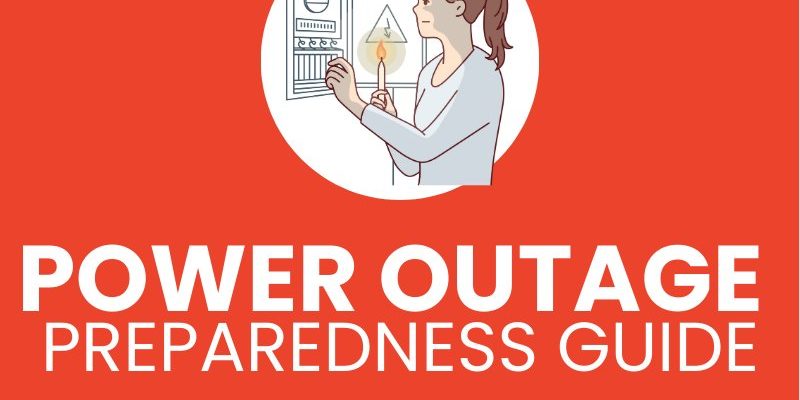
Let’s talk about why outages happen, what kind of risks are unique to this busy part of Seattle, and, most importantly, what you can actually do—before, during, and after the lights go out. Being prepared for a power outage in zip code 98101 is about more than just having candles ready. It comes down to understanding your surroundings, your building, and your resources, so you don’t have to scramble when the unexpected hits.
Why Does Zip Code 98101 Face Power Outage Risks?
Let me explain: 98101 is right in the beating heart of Seattle. Think high-rises, busy intersections, tech offices, apartments, shops, and restaurants. That kind of density means enormous electricity demand, round-the-clock. When you pile on Seattle’s famously unpredictable weather or a construction accident, outages can ripple out faster than you’d expect.
Storms are a common culprit. Heavy rains, windstorms, or even rare snow events can down power lines or knock out transformers. The city’s aging infrastructure doesn’t always keep up with the weather. Then, there’s the issue of construction mishaps. With so many buildings and street projects, one clumsy backhoe can throw whole blocks into darkness in an instant.
You might be wondering if power outages are more common here than in other Seattle neighborhoods. Honestly, it’s not that 98101 is somehow cursed, but its combination of old buildings, tight urban grid, and sheer volume of users puts it at a slightly higher risk—especially during big storms or city-wide events.
Common Causes of Power Outages in Downtown Seattle
If you’ve lived in 98101 for a while, you’ve probably noticed there’s no “one cause” of power outages. It’s a mixed bag. Here’s the thing—understanding the usual suspects can help you troubleshoot where the problem might be coming from, or at least keep your cool when the lights flicker.
- Weather: Storms, wind, lightning, and even fallen branches can cause outages.
- Equipment Failure: Transformers and underground cables get old or overloaded—sometimes they just konk out.
- Human Error: Construction crews sometimes hit underground wires by accident.
- Planned Outages: Sometimes Seattle City Light needs to cut power temporarily for repairs or upgrades.
Construction is a fun example—imagine a team, already behind schedule, rushing to lay new Internet cables. A backhoe goes too deep and, snap—the grid stumbles. Suddenly, your apartment and the coffee shop downstairs are in the dark. So, while weather is the classic villain, human error plays a bigger role in dense, ever-changing neighborhoods like 98101.
How Prepared is 98101’s Power Grid?
Here’s where it gets interesting. Seattle City Light, the main utility for the area, is actually recognized for reliability compared to many other big U.S. cities. They’ve poured money into upgrading transformers, replacing aging underground cables, and adding remote monitoring for faster troubleshooting. Still, parts of 98101 have older infrastructure that’s less robust than newer high-density residential neighborhoods.
One reason for this is history—some of these buildings went up a century ago, long before our modern power demands. Upgrades happen in pockets, so you might see one block lose power while the next street over stays lit. City Light uses smart grid technology in many spots to help with rapid diagnosis and reset when there’s a problem. But, even the best system can’t totally prevent outages, especially when geography, weather, and sheer usage all collide.
If you’re living in one of those lovingly-restored brick apartments or even a newer condo, it pays to ask your building manager about backup systems. Some downtown buildings now have emergency generators that automatically kick on if the grid fails—think of it like a remote backup battery for your entire floor.
Steps to Prepare for a Power Outage in Zip Code 98101
When you think of “preparedness,” don’t just picture a closet full of dusty canned peas and old flashlights. It’s more about knowing your routine, where you keep essential items, and what you can do ahead of time to make a blackout less of a hassle.
Here’s a checklist to get you started:
- Keep flashlights, batteries, and backup chargers in easily accessible spots—don’t bury them in the back of a closet.
- Charge your phone and essential electronics if a storm or construction is expected. External battery packs are lifesavers.
- Stock up on non-perishable foods—snacks you’ll actually eat, not just apocalypse rations.
- Know your building’s emergency plan. Is there a generator? How are doors and elevators affected?
- Sync up with friends or neighbors—having a “power outage buddy” can make everything less stressful.
Honestly, even little things help. Set a reminder to test your flashlights and replace batteries every few months. If your building has a secured entry, make sure you know how to get in or out if the power’s down and the doors need a reset.
What To Do During a Power Outage in 98101
The first few minutes after the lights go out can feel like chaos—especially if it’s nighttime or you’re halfway through frying eggs. Let me walk you through what actually helps, so you don’t end up pacing around with your phone flashlight and no idea what to do next.
Start by checking:
- Is the outage just your unit or the whole building? Peek down the hall or out the window.
- If it’s just you, check your breaker box—it might just need a reset.
- Ask a neighbor or the building manager if they know what’s going on.
If it’s clearly a bigger outage, switch off or unplug important electronics—TVs, computers, or anything sensitive. That way, if there’s a surge when power comes back, your gear is protected. Keep your fridge and freezer closed as much as possible to save the cold air. If you rely on medical equipment or special devices, have a plan—a battery backup or a backup location to go.
Don’t forget—during an outage, elevators might not work. If you have mobility challenges, let someone in your building know where you are. And finally, try to keep calm. Listen to local news, social media, or Seattle City Light’s outage map on your phone for updates. Sometimes, honestly, there’s nothing you can do but wait, but knowing you’re doing the right things helps.
Power Restoration: What Happens Behind the Scenes?
Ever wondered what goes on after you report a power outage? There’s a whole troubleshooting ballet happening that you never see. As soon as the utility gets a report, remote sensors and monitoring systems try to *pinpoint* where the failure happened. Crews are dispatched—sometimes immediately, sometimes in waves if the outage is citywide.
Seattle City Light often uses a kind of “remote reset” on parts of the grid, like rebooting a computer with a stuck screen. Sometimes, it works. Other times, they need to physically repair or replace equipment. If you see crews on your street, that’s usually a good sign you’re near the top of the queue.
Here’s the thing: restoration times can be hard to predict. A small, localized problem might be fixed in minutes. But if a big transformer is burned out or underground cables are damaged, you could be waiting hours (or, in rare cases, overnight). Power restoration in 98101 generally happens fast, but don’t bank on being first every time.
How to Report and Track Power Outages in Zip Code 98101
When the power cuts out, don’t just assume someone else has already called it in. Utilities need real-time data to respond quickly, so your report actually matters—even in a busy zip code. Seattle City Light makes it easy: their online outage map is accessible by phone, and you can report outages or check status updates right from your device.
Here’s your game plan:
- Save the Seattle City Light outage hotline in your contacts.
- Bookmark the online outage map on your phone for quick reference.
- If you notice weird patterns—like streetlights flickering or partial outages—report those too. It helps crews pinpoint the problem.
If you have a building manager or HOA, let them know what you’ve reported. They may be able to coordinate updates or troubleshoot issues inside your building that the power company doesn’t cover.
If you’re ever unsure whether it’s worth reporting, do it anyway. It’s like calling in a glitchy universal remote: more feedback means faster fixes for everyone.
Building-Specific Preparedness: Apartments, Offices, and Condos
Zip code 98101 is stacked with tall buildings and unique living situations. Your power outage plan should match your environment. For apartments and condos, always double-check if your building has an emergency generator or backup lighting in the halls. Some buildings have a “common area” you can access safely during outages, while others lock down elevators and lobby doors.
If you work in an office here, know your company’s outage plan. Are there emergency lights? Is there a way to pair your laptop to a backup battery, or should you just pack up and head home? Honestly, a good office will have a power outage code of conduct—if not, ask for one.
For older buildings, even small details matter. Bronze mailboxes might look charming, but old wiring can be fussy during resets. If lighting in hallways or stairwells doesn’t work, use care. Never use candles unattended, and always keep a working flashlight handy. If a building’s entry system depends on electricity, talk to management about manual override or alternate entry codes.
Smart Tech and Alternatives for Power Outage Preparedness
There’s more to power outage preparedness these days than fresh batteries. You can make life easier with a few smart gadgets—just don’t go breaking the bank. Here are some genuinely helpful alternatives for anyone in zip code 98101.
- Portable chargers and power banks: Keep your phone, tablet, or universal remote alive for hours after the grid goes down.
- LED lanterns with rechargeable batteries: Safer and brighter than old-school flashlights.
- Solar chargers: A good backup if you have rooftop access or big windows.
- Smart plugs or surge protectors with outage notification features—some can alert your phone if the power fails while you’re away.
If you want to go the extra mile, explore small UPS (uninterruptible power supply) batteries for your Wi-Fi router or essential devices. These are common in offices but often overlooked in apartments. They’re like a mini generator for the stuff you can’t live without—just enough to keep you online for a Zoom call or check outage maps.
Bringing It All Together: Staying Safe, Calm, and Connected
At the end of the day, power outages in zip code 98101 don’t have to be scary. Sure, they’re inconvenient. But a little planning, a dash of patience, and the right tools can make all the difference. Remember, most outages are short, and the city’s utility crews work fast to get the lights back on.
If you treat blackout prep like syncing up a universal remote—one step at a time, checking your batteries, and keeping your code handy—suddenly the process doesn’t seem quite so daunting. Talk to your neighbors, know your building’s plan, and keep your essentials ready. That way, when the next big storm or surprise outage hits, you’ll be less rattled and more ready to handle it all, one flashlight beam at a time.
